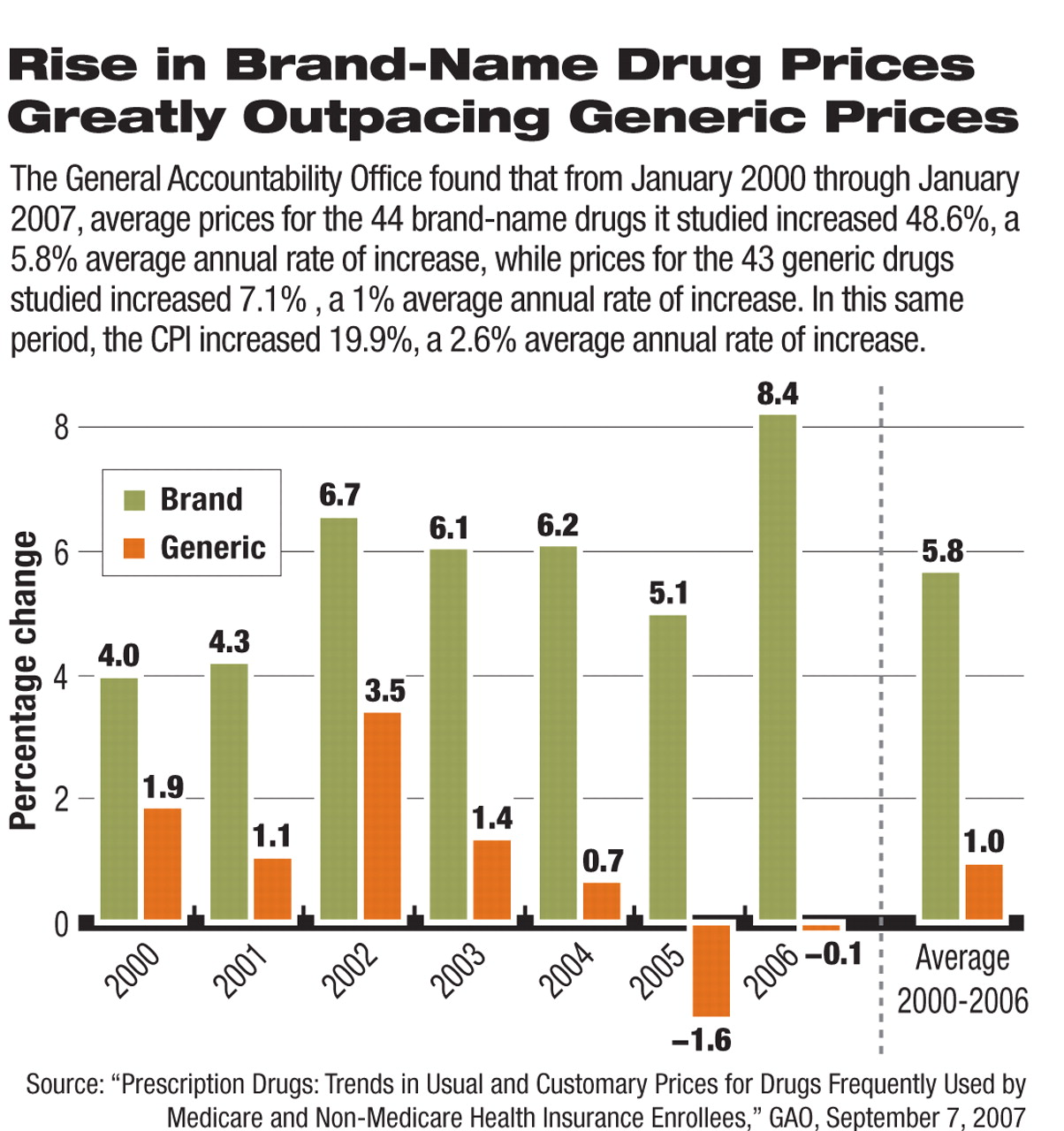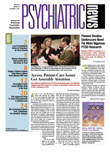The cost of prescription drugs rose at rates higher than the rate of inflation from 2000 to 2005, which made prescription drug costs among the fastest-growing in health care, according to a federal tracking report released in October.
A congressionally mandated report by the Government Accountability Office (GAO) tracked the “usual and customary” prices for 122 of the most-prescribed medications dispensed by pharmacies in New York and Pennsylvania. The report found a 4.3 percent average annual increase and a nearly 14 percent increase in overall prices between January 2004 and January 2007. The report also tracked a narrower group of drug prices from 2000 to 2007.
The drug price increases outpaced a common inflation measure during the period. The GAO cited nationwide data from the Bureau of Labor Statistics that found that from January 2004 to January 2007 prices of all common consumer goods for urban consumers—known as the Consumer Price Index (CPI)—increased by an average of 9.3 percent, or 3.0 percent annually.
The drug price increases were thought to be a large component of increases in overall health care costs, which rose by 6.9 percent in 2005, the most recent year for which the Centers for Medicare and Medicaid Services has data.
Significantly, the GAO report found divergent trends among brand-name and generic drugs. So-called “usual and customary” prices decreased among the 57 generic drugs tracked and increased for the 65 brand-name drugs. Specifically, the generic drug prices decreased by an average of 12.8 percent between 2004 and 2007, or 4.5 percent annually, while the brand-name drug prices increased by an average of 21 percent, or 6.6 percent annually.
The findings reflect those of previous drug-price analyses, including an August 2005 GAO report that found a 30-day supply of the 96 drugs most commonly prescribed under a large federal-worker insurance program increased by nearly 25 percent between January 2000 and December 2004.
When the GAO researchers also updated their previous study on the narrower group of medications to include data through January 2007, they found prices for the brand-name drugs increased 48.6 percent, or 5.8 percent annually (see
chart).
“Prescription Drugs: Trends in Usual and Customary Prices for Drugs Frequently Used by Medicare and Non-Medicare Health Insurance Enrollees” is posted at<www.gao.gov/cgi-bin/getrpt?GAO-07-1201R>.▪

